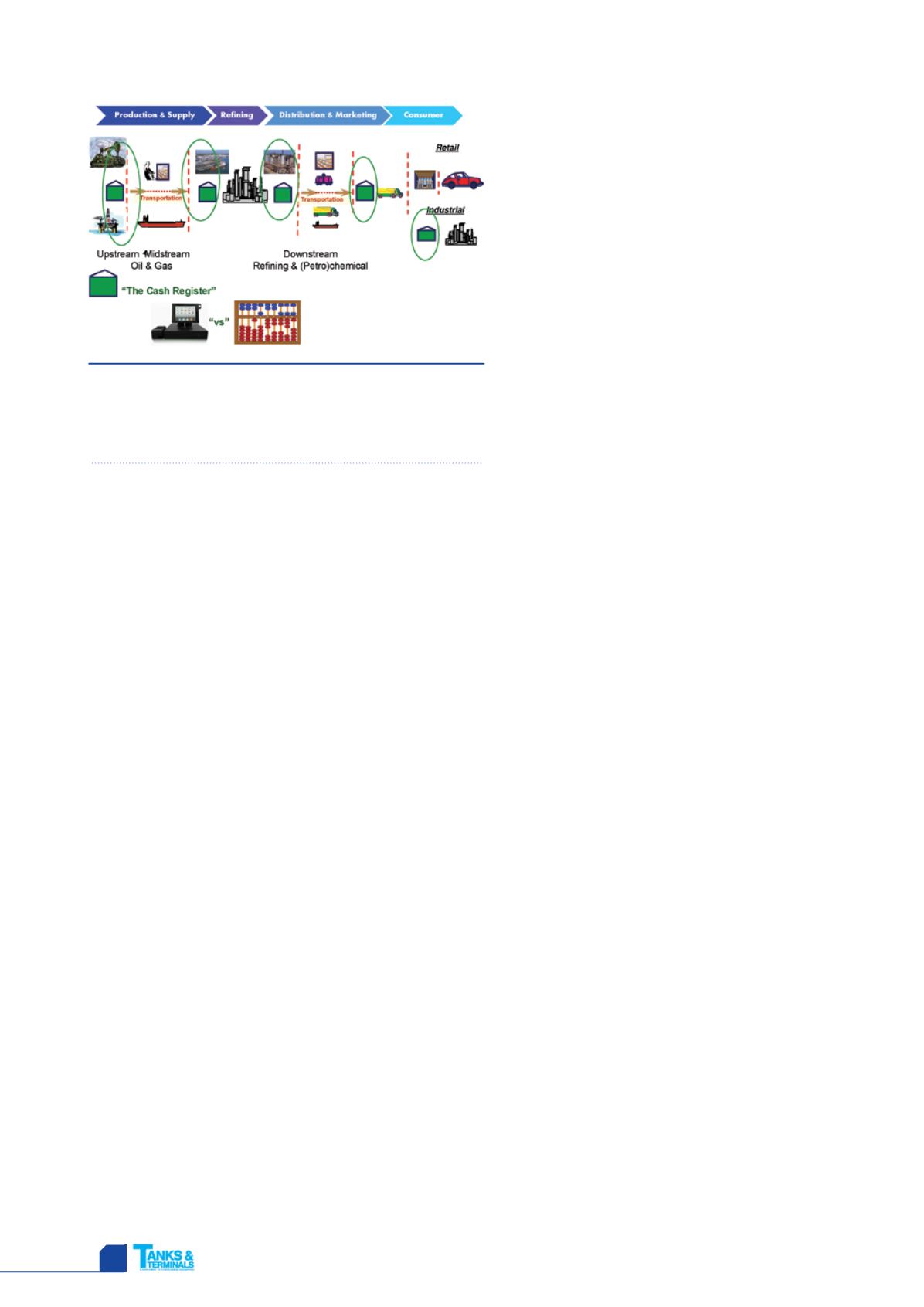
HYDROCARBON
ENGINEERING
34
operation was being carried out in the pre-dawn hours of a Sunday.
Operators filling the tank did not realise the two level sensors on
the tank were both inoperative, nor were they paying close enough
attention to realise the tank was reaching its limit. Pumping
continued as the tank began to overflow, and leaks in the
surrounding retaining bund allowed the gasoline to flow
throughout the adjacent tanks. The resulting fire burned for five
days and destroyed most of the 194 000 t facility.
Elk River chemical storage facility
In January 2014, residents near Charleston, West Virginia, noticed
a strange odour from their drinking water and called local
authorities. The odour was caused by
4-methylcyclohexylmethanol leaking from the Freedom
Industries chemical storage facility near the Elk River, the source
of the drinking water. The chemical, used to clean coal in nearby
mining facilities, was leaking out of a 1 in. hole in the bottom of a
40 000 gal. tank. Approximately 7500 gal. escaped, and much of
it found its way through the facility’s containment system to the
nearby river, where it affected the water supply of 300 000 local
residents.
Jaipur oil terminal
In October 2009, Indian Oil Corporation was beginning to
transfer gasoline from a storage tank to a pipeline at its Sitapura
Oil Terminal near Jaipur, India. Operators apparently opened
valves in the wrong sequence, resulting in a major discharge that
continued for hours. Gasoline accumulated around the tank and
created a cloud of vapour making breathing difficult, but the
facility had no incident response plan to deal with such a
situation. Eventually the vapour found an ignition source and a
massive explosion ensued. Ultimately the incident claimed
11 lives and injured more than 150.
Methods for prevention
Each of these situations could have been prevented by effective
automation. Buncefield was largely an instrumentation and
safety instrumented system (SIS) failure, and the situation was
made worse because operators had inadequate operator
Figure 1.
The global hydrocarbon supply chain is arguably
the most valuable and pervasive transfer activity in the
world. Terminals enter into the process time and time again
as product is processed and moves from wellhead to final
consumer.
interfaces to see what was going on throughout the
facility. Appropriately selected level sensors
integrated with more informative operator interfaces,
and an effective SIS, would have stopped the tank
from overfilling, whether the operators were paying
attention or not.
Freedom Industries had inadequate leak detection
capabilities, so neither its operators nor its safety
systems were able to realise the contents of a tank
had decreased substantially without any reason.
Inventory management capabilities tied to the larger
automation system could have detected such
changes, and leak detection sensors would have
identified the chemical outside its tank.
The Jaipur facility depended on human operators
to establish piping lineups, opening and closing
manual valves in the correct sequence to direct
products to the right locations. With automatic valves
controlled by an automation system, the valve lineup
procedure would be performed properly every time.
Positive effects of automation
Automation is not simply a defensive strategy to
prevent incidents; it can also increase the amount of
product a given terminal can handle while reducing
costs (Figure 2).
The challenges tank farm and terminal operators
face these days can be separated into four main areas:
n
Product issues, including inventory loss and
contamination: the number of products most
terminals have to handle has increased in recent
years, increasing the number of changeovers, tank
cleanings and line clears.
n
Customer demands: terminal users, whether
internal or external customers, expect more in the
way of product processing capabilities,
administrative information and turnaround speed.
Data on custody transfer has to be flawless and
delivered immediately to facilitate rapid order to
cash.
n
HSSE demands: every safety and environmental
incident at a terminal anywhere in the world
seems to drive tighter operational restrictions,
and operators must respond.
n
Personnel and staffing challenges: terminal
operators are not immune from the common
industry problem of finding reliable, technically
qualified workers. The great shift change affects
everyone.
Terminal management
Terminal owners and managers want control of the
business aspects of their operations, and these
activities centre on inventory tracking and handling
speed of both product and information. Moving
product through the facility is what generates
income, and movements need to be measured very
precisely.
n
Sophisticated instrumentation, such as the
Rosemount 5900S high precision radar gauge,
keeps a close handle on product movement,


